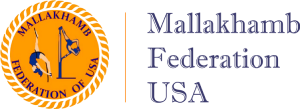National Facility
Founded in 2015 and headquartered in New Jersey, the Mallakhamb Federation of USA is committed to becoming the premier governing body for Mallakhamb in the United States. Similar to other esteemed amateur sports organizations in the country, our mission is to promote, develop, and represent Mallakhamb, both as a competitive sport and a cultural art form.
Our Objectives
- Select and train men’s and women’s teams to represent the USA in international Mallakhamb tournaments.
- Promote Mallakhamb among potential players, spectators, and fans.
- Serve as the global representative of Mallakhamb in the USA.
Join us in the pursuit of Mallakhamb excellence, whether you aspire to be an athlete, coach, or simply appreciate the beauty and tradition of this captivating sport. Explore our training programs and embrace the Mallakhamb experience.
Training Programs at Mallakhamb Sport Academy
At Mallakhamb Sport Academy, we offer a comprehensive range of training programs designed to cater to individuals of all ages and skill levels. Our programs are carefully structured to provide a holistic Mallakhamb experience, focusing on skill development, physical conditioning, safety, and performance preparation.
Youth Programs

Introduction to Mallakhamb
Our youth program starts with building a strong foundation. Participants gain a basic understanding of Mallakhamb and its rich history. Warm-up exercises improve flexibility and strength, and they are introduced to various Mallakhamb poses and postures.
Fundamental Techniques
Progressive Training
Safety and Discipline
Performance Preparation
Participants learn choreography and routines for exhibitions and competitions. We focus on developing confidence in performing Mallakhamb in front of an audience.
Physical Conditioning
Adult Programs
Foundation Training
Intermediate Techniques
Advanced Training
Competitive Training
Injury Prevention and Recovery
Personal Fitness Goals

Private Coaching
Individualized Assessment
Personalized Training Plan
One-on-One Instruction
Skill Advancement
Flexible Schedule
Goal-Oriented Approach
Exclusive Attention
Training Rules

Warm-Up
Always begin with a proper warm-up to prepare your body for training. Include dynamic stretching exercises to increase blood flow and loosen muscles.

Safety First
Prioritize safety at all times. Use appropriate safety equipment, such as mats and harnesses, as needed. Follow safety guidelines and protocols established by your coach or trainer.

Proper Technique
Focus on learning and using proper techniques for each Mallakhamb pose and exercise. Correct technique not only improves performance but also reduces the risk of injury.

Progression
Progress gradually. Start with basic poses and exercises, and gradually move to more advanced ones as your strength and skills improve. Do not rush the process.

Supervision
If you are a beginner or trying a new exercise, always have a qualified coach or trainer present to supervise your training. They can provide guidance and ensure safety.

Rest and Recovery
Allow your body sufficient time to rest and recover between training sessions. Overtraining can lead to fatigue and injuries.

Hydration
Stay well-hydrated before, during, and after training. Dehydration can impair performance and increase the risk of cramps and heat-related issues.

Nutrition
Maintain a balanced diet to support your training. Proper nutrition fuels your body and aids in recovery.

Communication
Communicate openly with your coach or trainer about any discomfort, pain, or concerns during training. They can make necessary adjustments to your program.

Warm-Down
After training, engage in a cool-down routine that includes static stretching to improve flexibility and reduce muscle soreness.

Equipment Maintenance
Regularly inspect and maintain Mallakhamb equipment to ensure it is safe and in good working condition.

Respect
Show respect to your coach, fellow athletes, and the training facility. Maintain a positive and supportive training environment.

Consistency
Consistent training is key to improvement. Stick to a regular training schedule to see progress over time.

Listen to Your Body
Pay attention to your body’s signals. If you experience pain or discomfort that goes beyond normal muscle soreness, stop training and seek medical advice if necessary.
